Build & Package Manager tools in DevOps
 Suraj
SurajTable of contents
- Introduction to Build & Package Manager Tools:
- Artifact repository:
- What kind of file is in the artifact?
- Install Java and Build tools
- How to build the artifact with dependencies?
- Build tools in Java
- Build Tools for Development (Managing Dependencies)
- Run the application
- Build JavaScript application
- What does the zip/tar file include?
- Package Frontend Code
- What are Build tools for other programming languages
- Publish an artifact into the repository
- Build tools & Docker
- Build Tools for DevOps Engineers
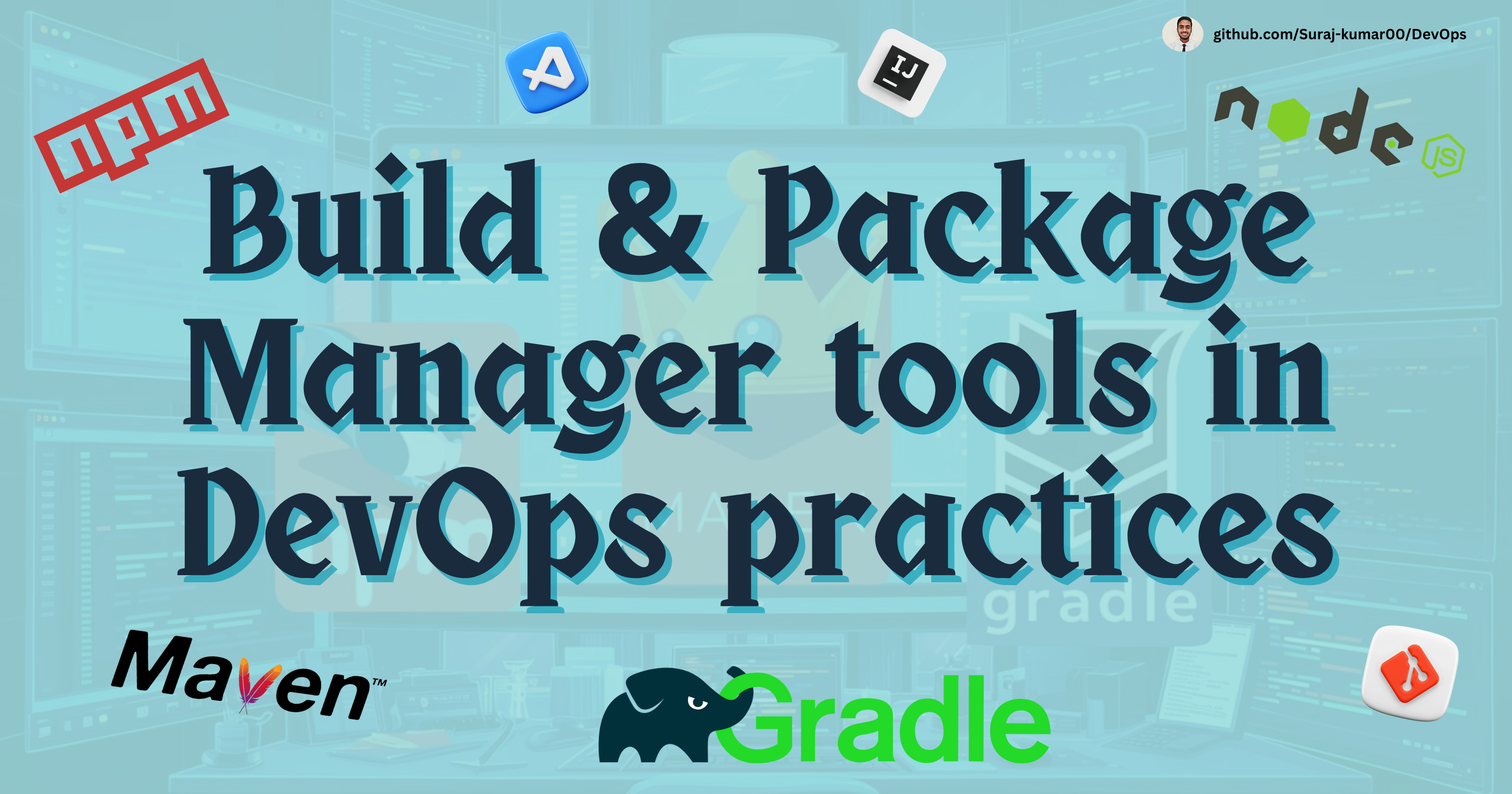
Introduction to Build & Package Manager Tools:
What are built and package manager tools?
When developers create an application, it needs to be available to end users. This involves deploying the application on a production server, which requires moving the application code and its dependencies to the server. This is where build and package manager tools come into play.
Package application into a single movable file
And this single movable file is called an artifact.
Packaging = “building the code”
Building the code involves:
Compiling (Hundreds of files into 1 single file)
Compress (Hundreds of files into 1 single file)
After the artifact was built we kept artifacts in storage also
In case we need to deploy multiple times, have a backup, etc.
E.g.: If we deploy the artifact on the dev server, we deploy the test environment, or later on the production environment.
Artifact repository:
The storage location where we keep the artifact once we build it is called the artifact repository, an example is Nexus, JFrogArtifactory.
What kind of file is in the artifact?
The artifact file looks different for each programming language
E.g., if you have a Java Application the artifact file will be a JAR or WAR file
JAR = Java Archive
These include whole code and dependencies like:
Spring Framework
datetime libraries
Pdf processing libraries
Install Java and Build tools
Install java
Install Maven
install Node + npm
Download IntelliJ or VSCode
How to build the artifact with dependencies?
Using a Build Tool, so there are special tools to build the artifact
These tools are specific to the programming language
For Java:
- There is Maven and Gradle
For NodeJs Or JavaScritp
- There are npm and yarn
What These tools do:
Install dependencies
Compile and compress your code
And can do some other different tasks
Build tools in Java
JAR or WAR file
Maven: Uses XML for configuration and is widely used for managing dependencies and building projects.
Gradle: Uses Groovy for configuration and is known for its flexibility and performance.
| Tools | Maven | Gradle |
| Language uses | XML | Groovy |
Which is more convenient for scripting and writing all those tasks for building the code or compiling etc.
Both have command line tools and commands to execute the tasks
Gradle commands to execute the Java file (Doing Hands-On)
This command will compile the code, resolve dependencies, and package the application into an artifact using Gradle.
./gradlew build
In the Gradle, we don’t need to configure how the JAR file is built.
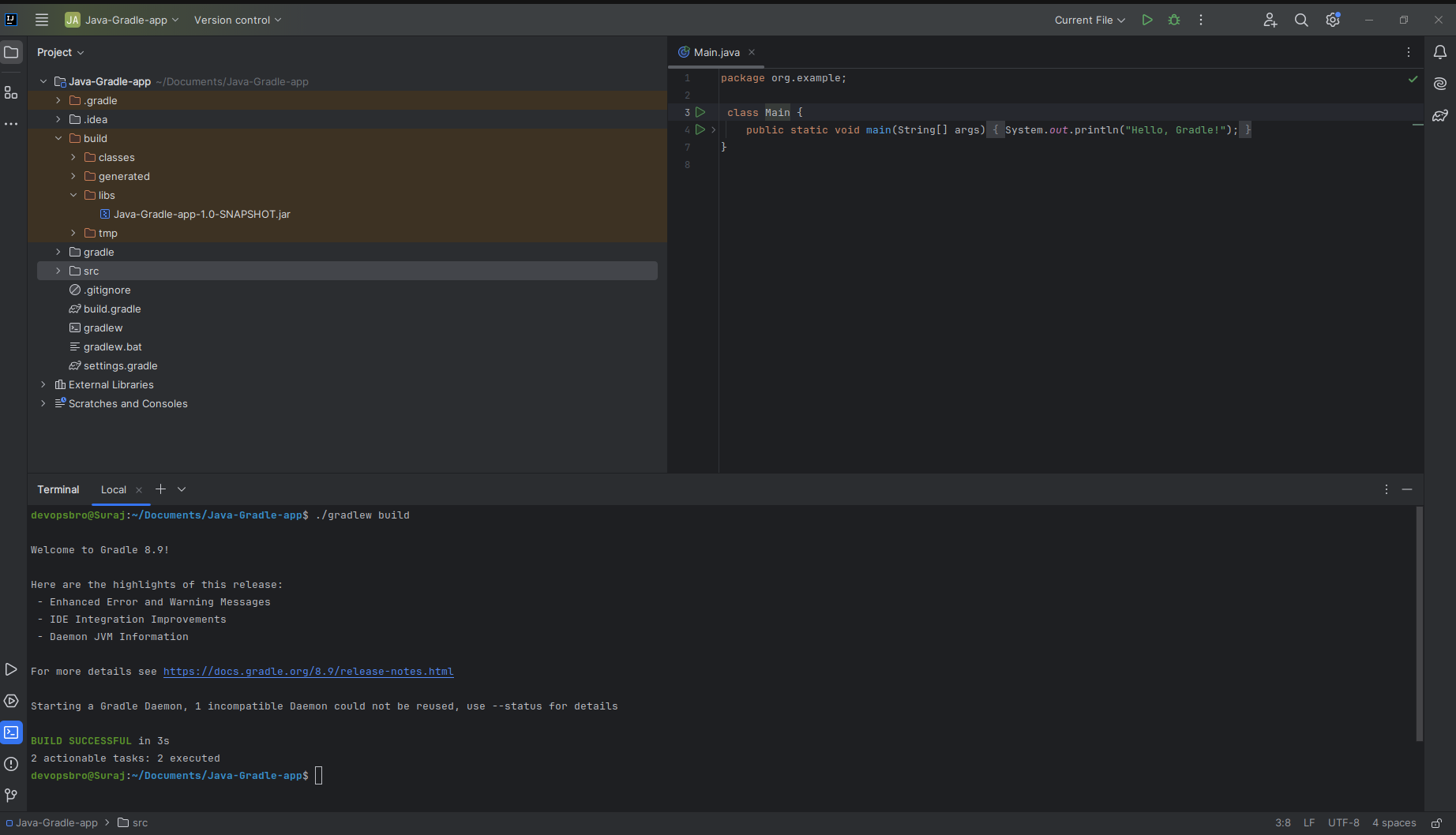
Maven command to execute the Java file
Add this plugin to your pom.xml file:
<build>
<plugins>
<plugin>
<groupId>org.springframework.boot</groupId>
<artifactId>spring-boot-maven-plugin</artifactId>
<version><!-- Specify version here --></version>
<executions>
<execution>
<goals>
<goal>repackage</goal>
</goals>
</execution>
</executions>
</plugin>
</plugins>
</build>
The command will compile the code, run tests, package the application into an artifact, and install it into the local Maven repository.
mvn install
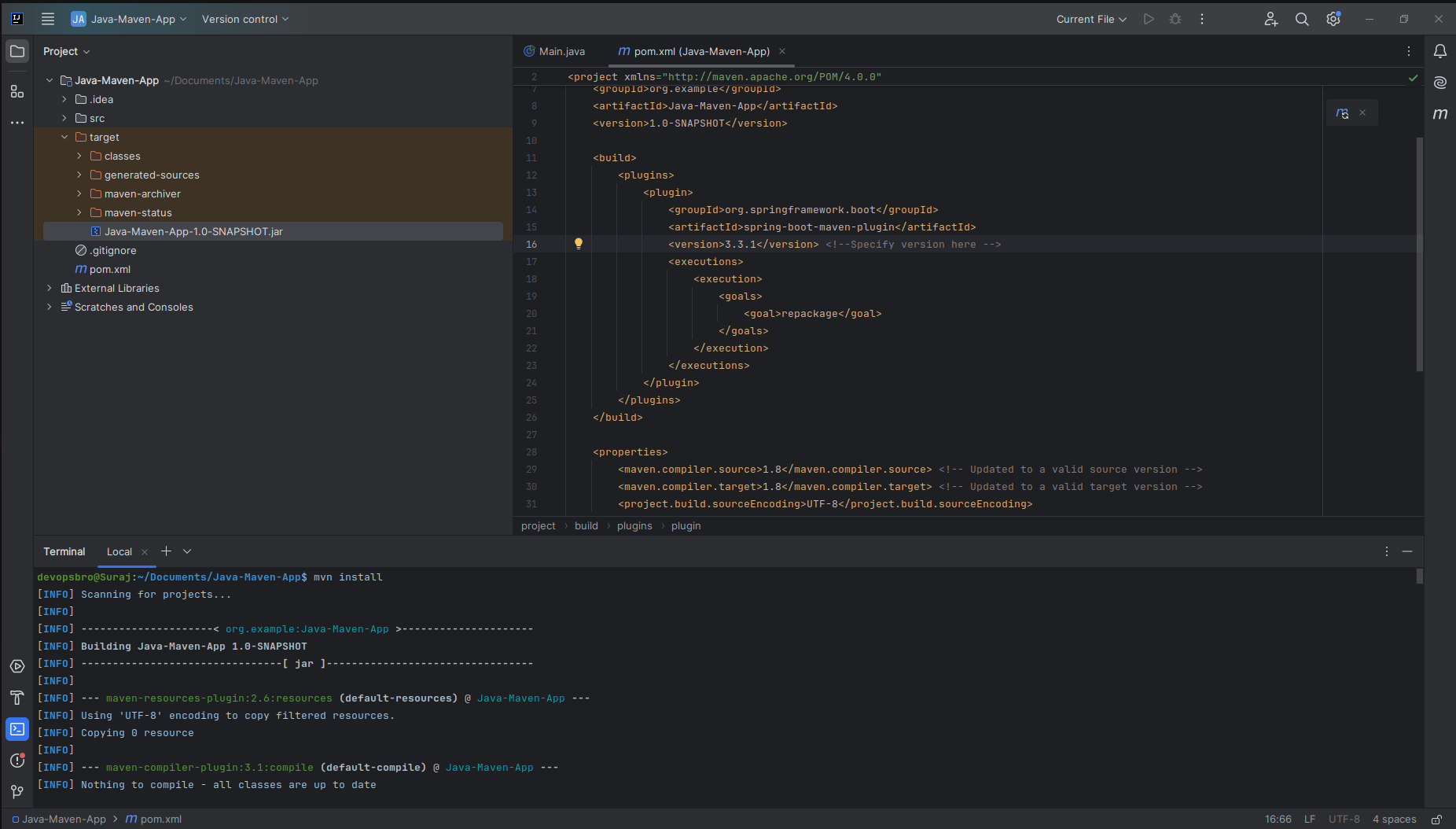
Build Tools for Development (Managing Dependencies)
It would help if you had the build tools also locally when developing the App
Because you need to run the app locally
run tests
Maven and Gradle have their own dependency files
- Dependencies file = Managing the dependencies for the project
Where these Dependencies files lies:
For the maven its - pom.xml
For the Gradle it's - build.gradle
You need a library to connect your Java application to ElasticSearch
Find a dependency with name and version
You add it to the dependencies file (e.g.
pom.xml)Dependency gets downloaded locally (e.g local maven repo)
Run the application
Now let’s say we’ve built an artifact, stored it in the artifact repository, and copied it also on the server.
Now the question is how do you run the application with the artifact
This is the command to execute the .jar file for example:
// This example is for gradle
java -jar <name of jar file>
//This is an example of Gradle
java -jar build/libs/java-app-1.0-SNAPSHOT.jar
// This example is for Maven
java -jar <name of jar file>
//This is an example of Maven
java -jar target/java-maven-app-1.0-SNAPSHOT.jar
So if you are on a fresh server where and you have Java installed you can download the artifact from the repository and start the application using above commands.
Build JavaScript application
What about the JavaScrip Application
JS doesn’t have a special artifact type
So it can’t be built in ZIP or TAR file
So how do we build a js artifact file as a zip or tar file
These are the alternatives over Gradle and Maven in JavaScript
npm- much more widely usedyarn
These both contain package.json file for dependencies
npm and yarn are package managers and NOT build tools
These package managers install dependencies, but not used for transpiling JavaScript code or JavaScript artifact.
npm repository for dependencies : It refers to the npm registry, which is a public repository of JavaScript packages. It is used to find and install dependencies (libraries or modules) required for JavaScript projects.
Command Line Tools - npm
npm start- start the applicationnpm stop- stop the applicationnpm test- run the testnpm publish- publish the artifact
What does the zip/tar file include?
- application code, but not the dependencies
When you Run the app on the server
You must install the dependencies first
Unpack zip/tar
Run the app
You need to copy the artifact & package.json file to the server to run the application
To create an artifact file from our node js application
npm pack
JavaScript world is much more flexible than the Java world
But not as structured and standardized
So the above is about nodejs a backed application but what about frontend application when it comes to package.
Package Frontend Code
Different ways to package this
Package fronted and backend code separately
Common artifact file
For example, if we have reactjs and nodejs application both in Javascript than we can have:
Separate pakcage.json file for frontend and backend
Common package.json file
Frontend/react code needs to be transpiled!
Browser don’t support latest JS versions or other fancy code decorations, like JSX
The code needs to be compressed/minified!
Separate tools for that - Build Tools/Bundler!
e.g.: webpack
Build Tools - Webpack
Webpack is a build tool that bundles, transpiles, and minifies JavaScript and other assets for frontend applications.
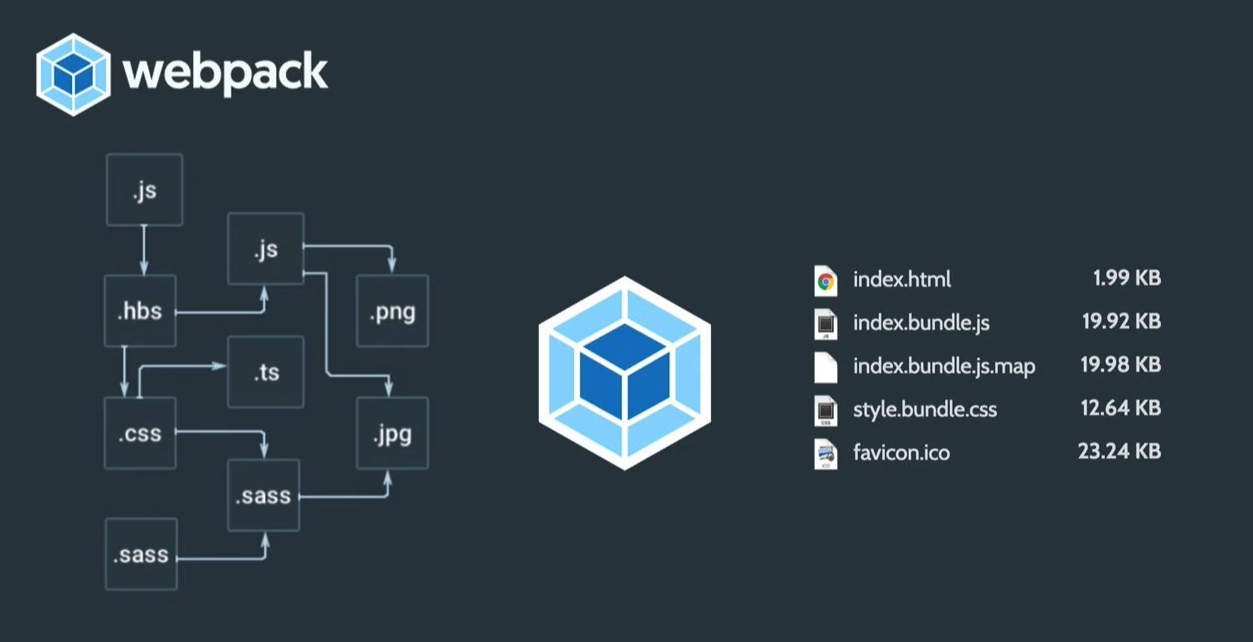
It will transpiles, minified, bundles, compresses the code.
// install the webpack
npm install
// It is used to bundle or compress the javascript code
npm run build
Dependencies for Frontend Code
npm and yarn for dependencies
Separate package.json vs. common package.json with backend code
Can be an advantage to have the same build and package management tools
In case react has Java as a backend:
Bundle-fronted app with webpack
manage dependencies with npm or yarn
package everything into a WAR file
What are Build tools for other programming languages
These concepts are similar to other languages
pip package manager for python
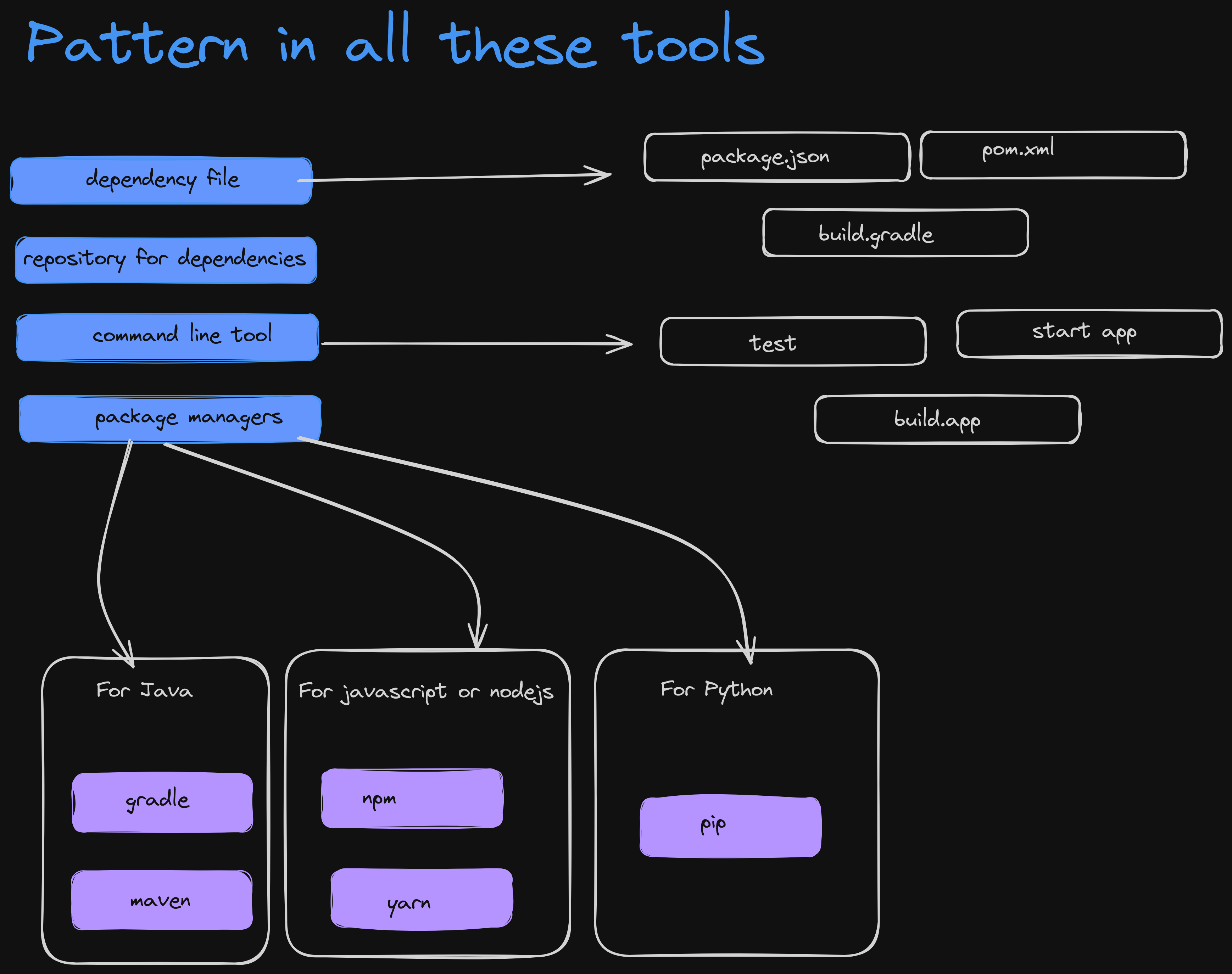
Publish an artifact into the repository

You build the artifact you need to push it to the artifact repository
Build tools have commands for that
Then you can download (curl, get) it anywhere
NOTE: we don’t fetch or push the artifact like that because of Docker.
The two important things to understand related to these package managers and build tools that we use for different programming languages Docker and another CI/CS pipeline(Jenkins)
Build tools & Docker
With Docker, the need to create zip or tar files is reduced. Docker images can directly contain the application code, simplifying the deployment process.
With docker, we don't need to build and move different artifact types.
There is just one artifact type - Docker images
Now, we build Docker images from the application and we don't need a repository for each file type, no need to move multiple files to the server like package.json, no need to zip, just copy everything into the docker filesystem and run it from docker image.
Docker image is also an artifact
In order to start the application you don't need npm or java on the server, execute everything ( command to run the JAR or node application) inside the docker image.
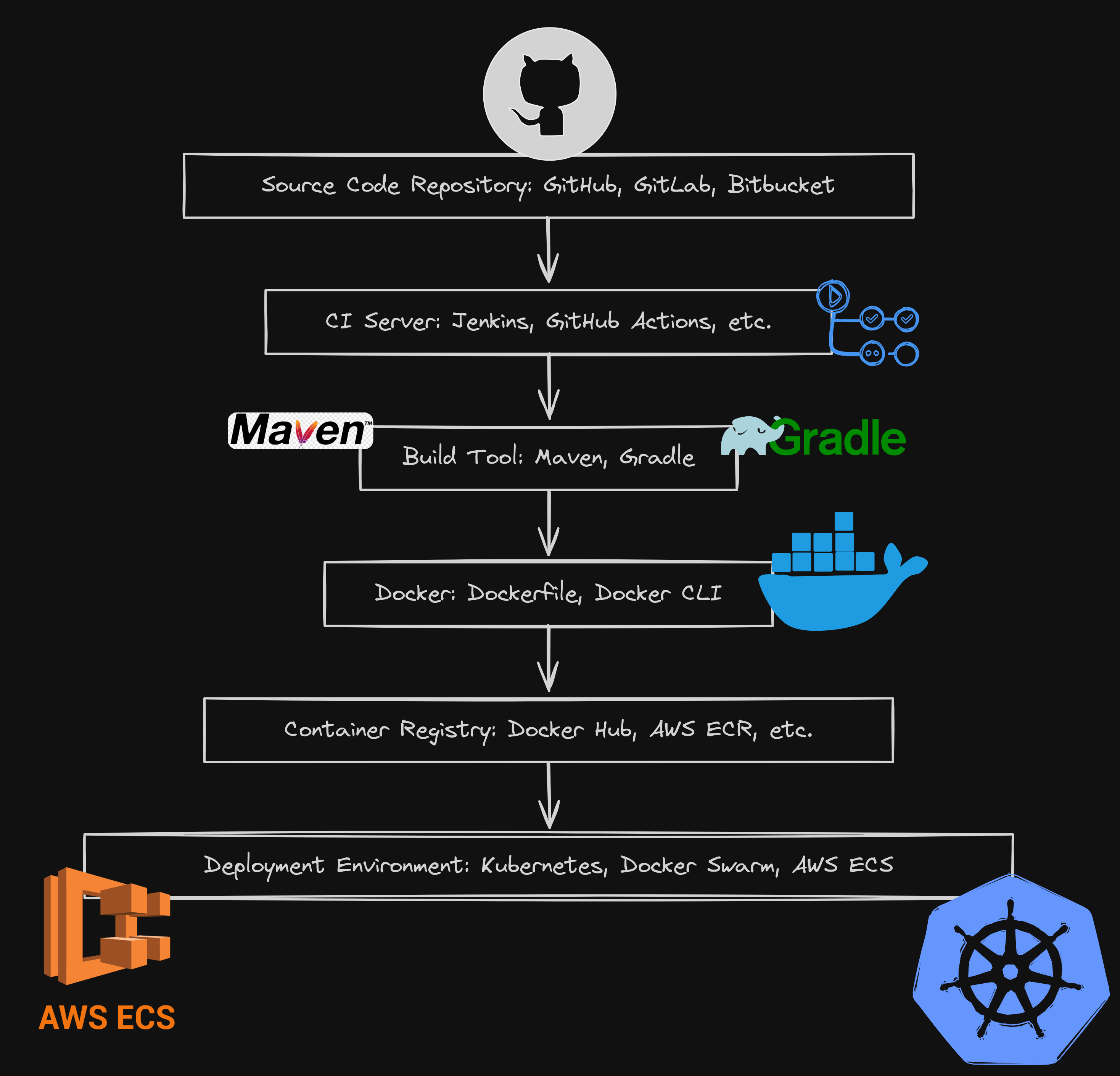
NOTE: For the different Java and javascript applications - we don’t need to create zip or tar files anymore because of docker images because we can directly copy and paste the JS code files into docker image but we have to build the application
Docker file for Javascript

Docker file for java

Build Tools for DevOps Engineers
Why should you know these Build Tools?
DevOps engineers need to understand build tools to assist developers, automate builds, and manage CI/CD pipelines. This includes:
Developers install dependencies locally and run the application, but don’t build it locally
You need to execute tests on the build servers
npm/yarn testgradle/mvn testHelp Developers for building the application
Because you know where and how it will run
Build Docker image ⇒ Push to Repo ⇒ Run on Server
You need to configure the build automation tool CI/Cd pipeline
Install dependencies ⇒ run tests ⇒ build/bundle app ⇒ push to repo
NOTE: You don’t run the app locally
Subscribe to my newsletter
Read articles from Suraj directly inside your inbox. Subscribe to the newsletter, and don't miss out.
Written by

Suraj
Suraj
I'm a Developer from India with a passion for DevOps ♾️ and open-source 🧑🏻💻. I'm always striving for the best code quality and seamless workflows. Currently, I'm exploring AI/ML and blockchain technologies. Alongside coding, I write Technical blogs at Hashnode, Dev.to & Medium 📝. In my free time, I love traveling, reading books